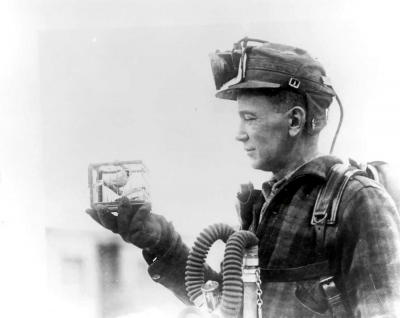
On this day in 1986, a mining tradition dating back to 1911 ended: the use of canaries in coal mines to detect carbon monoxide and other toxic gases before they hurt humans. New plans from the government declared that the “electronic nose,” a detector with a digital reading, would replace the birds, according to the BBC.
Although ending the use of the birds to detect deadly gas was more humane, miners’ feelings were mixed. “They are so ingrained in the culture, miners report whistling to the birds and coaxing them as they worked, treating them as pets,” the BBC said.
At the time, it was the latest of many changes in the British mining industry, which was a source of great strife in the country through the 1980s. Pit ponies, the other animal that went underground with human miners to haul coal, were also phased out by automation. The last of them retired in 1999, wrote Clare Garner for The Independent.
The idea of using canaries is credited to John Scott Haldane, known to some as “the father of oxygen therapy.” His research on carbon monoxide led him to recommend using the birds, writes Esther Inglis-Arkell for Gizmodo. He suggested using a sentinel species: an animal more sensitive to the colorless, odorless carbon monoxide and other poisonous gases than humans. If the animal became ill or died, that would give miners a warning to evacuate.
Credit : Smithsonian
Picture Credit : Google




